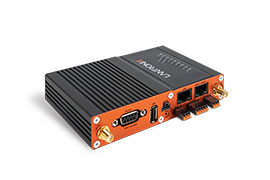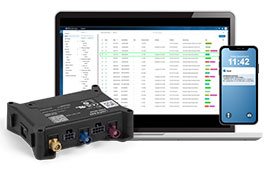
The Benefits of Having an Out-of-Band Network Infrastructure
With hardware consolidation on the rise, fewer devices are responsible for controlling more functions. Routing, switching, serving, and more are being housed in a single appliance. The uptime of these multifunctional devices is critical. A single issue with one of these devices results in a severe effect on your network because it can take several critical business systems down at once.
Out-of-Band Network Infrastructure Makes Sense
Any device with a console port or web management interface can be managed with out-of-band management. IT teams utilizing out-of-band technology can reach those devices whether your devices are powered on or off, located on- or off-site, or are inside or outside the corporate firewall. Smart out-of-band infrastructure can spot and fix the network and system connectivity issues. As a result, it allows IT Departments to run a more smooth and transparent operation. With out-of-band management, you can remotely manage everything with one tool and easily control it all from one platform — whether it’s networking, compute, storage, or power.
Essential Benefits of Out-of-Band Network Infrastructure
The heightened flexibility to access devices through out-of-band infrastructure enables the business to:
Mitigate or Eliminate Downtime Network
- There is more than one issue that fuels downtime for an organization. In some cases, network downtime is the result of software failure or human error. The most common issues are hardware, power, routing, and configuration. Through out-of-band tools, having the ability to troubleshoot that device remotely instead of dispatching a tech can save the expense of onsite Still, more importantly, the time to resolution is cut dramatically.
Streamline Processes
- It is no secret that the support of both current and especially legacy systems can lead to frustration. With out-of-band infrastructure, businesses can streamline their entire process to detect infrastructure issues before they become critical. The result is that organizations can resolve network issues efficiently and faster. With out-of-band management, the need for equipment to be shipped back to IT for resolution or for technicians to be scheduled onsite is significantly reduced. The result is that network devices can be restored faster, reducing downtime, and boosting productivity.
Low IT Network Management Costs
- Out-of-band infrastructure reduces overall operational costs. The growth of the organization does not need to create the growth of your support team. Out-of-band management creates a better, more efficient IT department.
Resilient Systems
- Out-of-band infrastructure allows companies to minimize expensive network outages. Organizations understand that downtime is costly and can leave a long-lasting impact on productivity. Essentially, out-of-band network tools will enable you to reduce the outage length and help IT administrators conduct a review to reduce the occurrence of the outage in the foreseeable future.
Lastly, out-of-band management isn’t just for hardware failure. When designed and configured correctly, out-of-band allows you to perform functions such as initial server setup, including installing the operating system or installing hardware updates that require you to reboot into a bootable ISO or perform firmware updates. The ability to restore a server from a backup is also a time-intensive task that can be accomplished utilizing out-of-band management.
The Bottom Line
There is not an IT environment that would not experience a cost-benefit of implementing out-of-band technology. Understanding all the benefits of out-of-band management and technology is the key to a successful and stable environment. The IT executives that understand that out-of-band management can optimize business operations and maintain high industry standards while supporting business continuity are the executives that will deliver the most significant success to their organizations.













